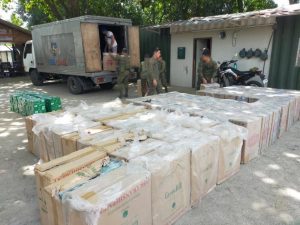The City government will close off portions of C.M. Recto Street to traffic as it works on the next phase of the Davao Light and Power Company underground cabling project.
In a notice posted along the street, the city assured that work will only from 9 p.m. to 5 a.m. in portions of the street for minimal disruption.
The work on the underground cables will begin more than a year after Mayor Sara Duterte-Carpio signed an ordinance outlining the ground work for the project.
Moving the messy overhead wires underground began as a project in 2014 by the late Councilor Leonardo Avila.
As a result, the city government ordered the power utility to construct a system that would place underground all cables, including those of other utilities such as cable, internet, telcos, and other pole users.
The ordinance also threatened to slap heavy fines on pole users whose lack of cooperation would delay work on the underground cabling of the wires.
The project expands an earlier pilot project around the city government grounds.
There are no longer any overhead wires along the streets surrounding the city government’s main buildings along Pichon and San Pedro streets.
The initial plans involved the underground cabling of the wires along the Kadayawan festival routes, such as C.M. Recto (formerly Claveria), Ramon Magsaysay (formerly Uyanguren), and Roxas Avenue.
The ordinance requires companies such as PLDT, Smart, Globe, as well as other pole users such as DCTECH, SkyCable, Bayantel to coordinate with the DLPC and comply with the requirement.
The Bureau of Fire Protection has also been informed of the measure, in case there are fire hydrants that could be affected by the project.
According to a copy of the ordinance, the underground cabling project would run in three more phases starting 2017 until 2020.
Eventually, there will no longer be overhead wires over R Magsaysay, C. Bangoy, Bonifacio, Pelayo, and Quirino Streets by 2020.
The underground cabling comes as the city council committee on peace and public safety said there has been an increasing number of electrocutions in the last five years in the city, with some of the cases involving overhead wiring.
From 2013 to the first quarter of 2018, there have been a total of 1,285 reported cases of burn patients in the city, with a fraction involving overhead wires in cases where there were residents trying to access the poles.
There were 27 reported cases in the first quarter of 2018 alone.
Other cases involved electrocutions in high-density residential areas. The city government is considering other measures to protect the public against electrical burns of all kinds, including the protection of workers.





